Corsair TMS Quick Start Guide
Welcome! This quick start guide walks you through the typical stages involved in the order/shipment life cycle.
As you follow each stage, you'll notice the relevant topics contain hyperlinks you can select to view more details about the topics.
Your first step is to create an order.
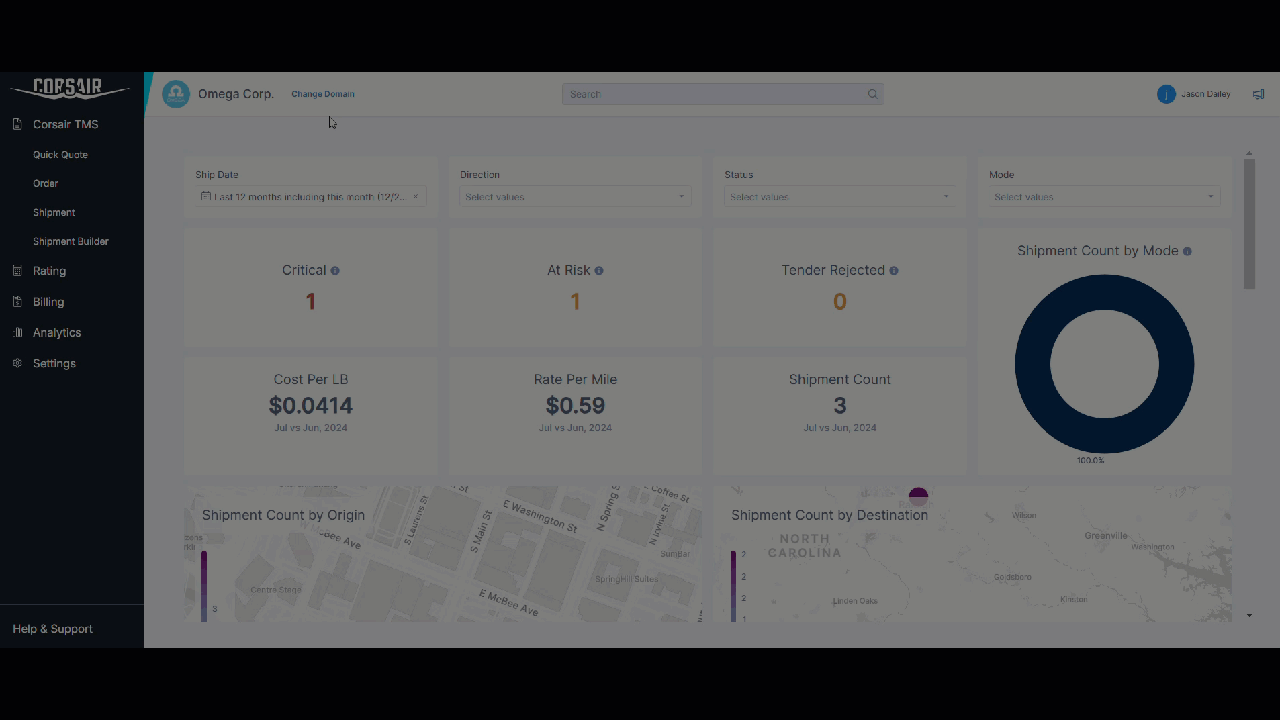
Order templates
If you plan to create multiple orders where all or most of the order information will be the same, you can create and use order templates. Order templates provide a convenient way to avoid entering the same order information multiple times.
You'll have the option to create an order template while creating a new order. After you enter all the order information, select Save Template As and enter a name for the template just before you save the new order.

After you've successfully created the order, its Details for Order page displays. The Details for Order page contains multiple details about the order, such as its Order ID, origin and destination, requested pick-up and drop-off dates, and such.
Important
After you complete Stage 1, the order status is as follows:

It's time to select a carrier to pick up and deliver the freight described in the order.
On the Details for Order page, in the Rates section, you can view the available carrier rates and then select a carrier rate for the order.
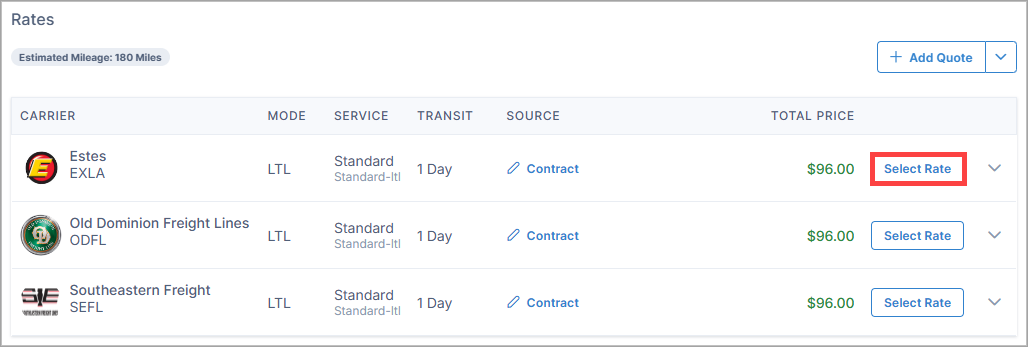
In the Tender to Carrier dialog box, select a tender method, and select Confirm. A tender is a request for transportation services that you send to a carrier.
Note
After you select a carrier rate and tender method, a shipment is created for the order.
If you select to assign the carrier without tendering it, a shipment is still created for the order. In this situation, you can tender the carrier at a later time.
When a shipment is created, it has Carrier Assigned status. The order associated with the shipment has In Process status.
Consolidate multiple orders into the same shipment
If you want to create a multi-stop shipment by consolidating multiple orders into the same shipment, you can create it manually using the Shipment Builder.
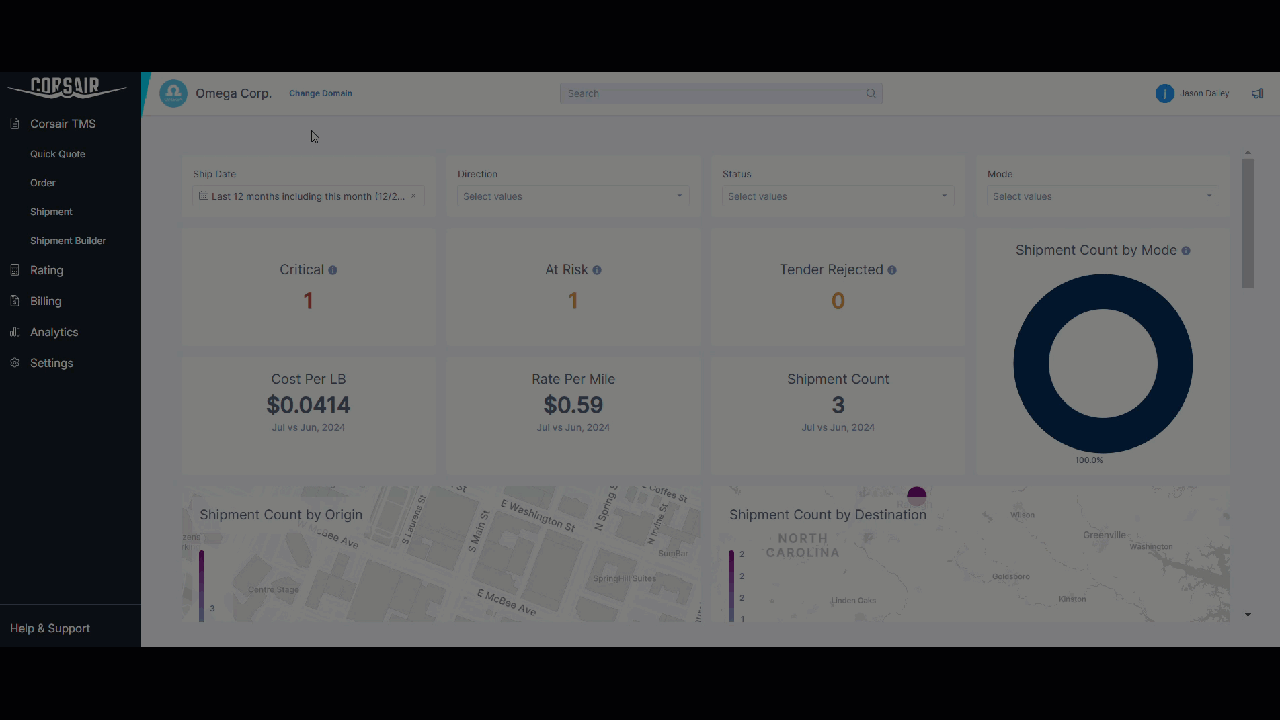
Important
After you complete Stage 2, the order/shipment statuses are as follows:

Note: The shipment's financial status is Unmatched, meaning an invoice isn't yet matched to the shipment. The status will remain Unmatched until an invoice is matched in a later stage.
Note: From this stage onward, if the shipment is canceled:
The shipment will have Canceled shipment status and will be removed from the list of shipments in Corsair.
The order will return to Pending order status, and it can be either canceled or consolidated with another order.
The carrier picks up the shipment based on the Requested Earliest Pickup and Requested Latest Pickup date range you entered earlier while creating the order in (Step 1).

You can consider the following options to provide excellent accountability with shipments before a carrier picks up the shipment:
Require carriers to provide arrival and departure times on their stops before the shipment status can advance in Corsair.

Set specific documents as being required to be posted in Corsair before all the fees associated with a shipment are paid.
Depending on which documents you set as required for shipments, those documents typically begin being received when the carrier picks up the shipment (Step 4). For example, a Bill of Lading (BOL). You can also request documents for the shipment while it's in transit and after delivery.

Any final required documents are received typically at or after (Stage 6) when the carrier delivers the shipment. For example, a Proof of Delivery (POD).
Important
After you complete Stage 3, the order/shipment statuses are as follows:

On the shipment's Details for Shipment page, the Events & Milestones records and displays significant events of the shipment such as its pickup and delivery details as well as other updates while in transit.

Important
After you complete Stage 4, the order/shipment statuses are as follows:

After delivery, the stages of the shipment's life cycle that are handled by Corsair TMS come to an end. From this point onward, Corsair Billing tracks the financial details of the shipment until all fees are finally paid.
You can view the shipment's financial status anytime:

Important
After you complete Stage 5, the order/shipment statuses are as follows:

After the carrier delivers the shipment, they send the carrier invoice containing all their fees for handling the shipment.
Corsair receives carrier invoices in any of the following ways:
You manually create the carrier invoice on the Carrier Invoices page.
The carrier emails the invoice that feeds into the Document Queue.
The carrier sends the carrier invoice via API that feeds into the Document Queue.
The carrier sends the carrier invoice via EDI that feeds into the Document Queue. An advantage with EDI is that the carrier invoice is automatically matched to the related shipment.
When Corsair receives the carrier invoice, it's initially stored in the Document Queue.
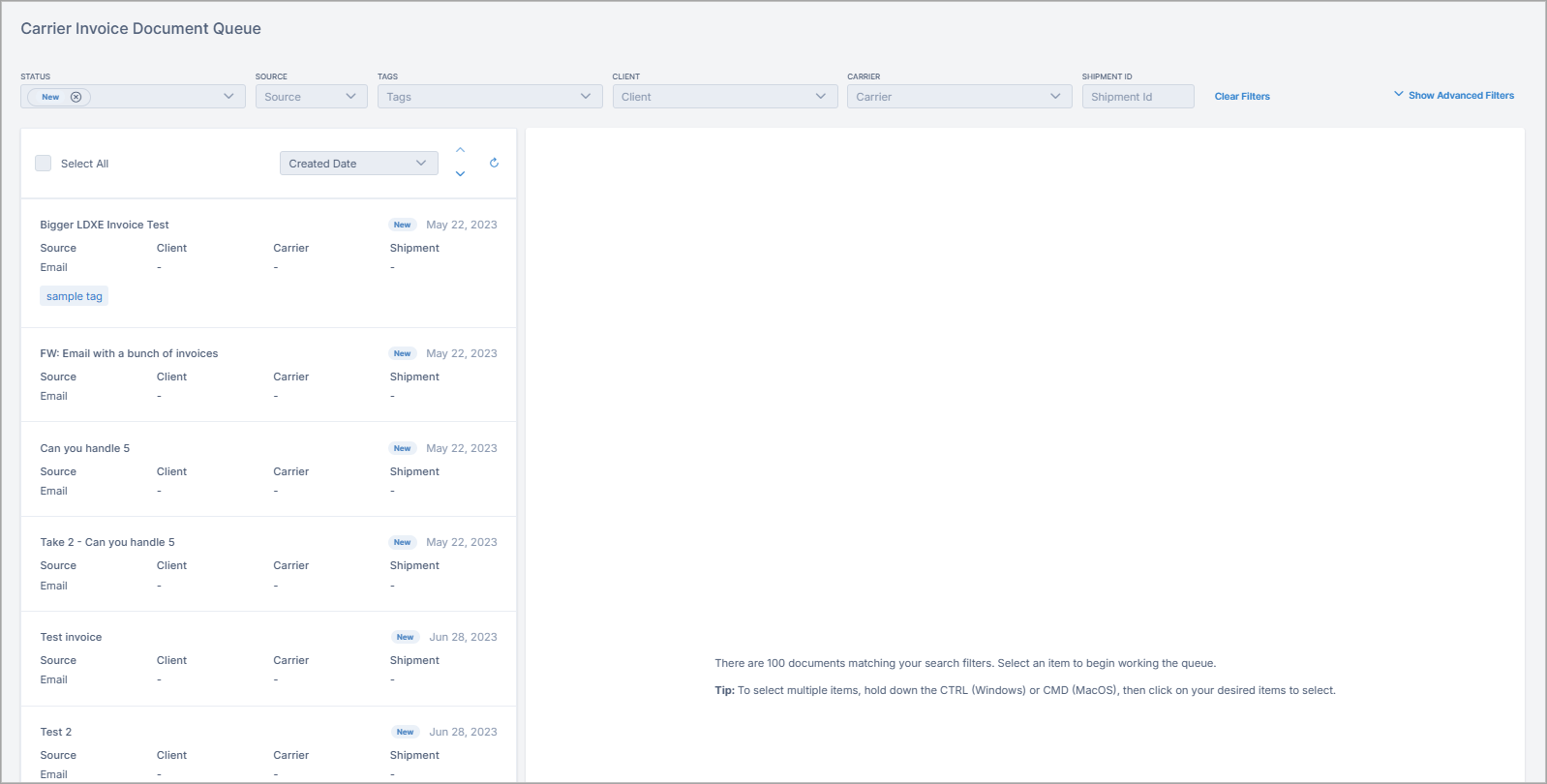
After you match a carrier invoice to the shipment, the financial status is Carrier Invoice Received.
Important
After you complete Stage 6, the order/shipment statuses are as follows:

This audit ensures there isn't a financial discrepancy between the carrier invoice and the planned rate offered by the carrier.
If the financial audit passes:
The shipment's financial status is Ready for Billing.
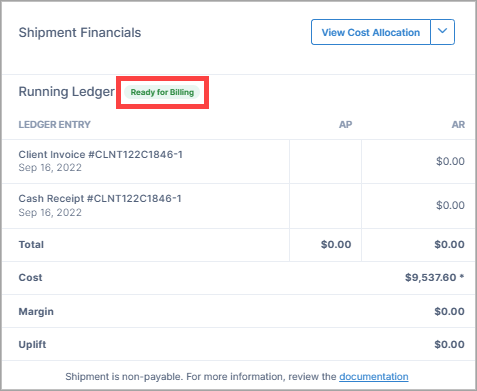
Note
The fees for the shipment will be processed on the next bill run which is scheduled according to the service agreement.
If the financial audit fails:
A financial audit fails when there's a discrepancy between the charges on the carrier invoice and the planned rate offered by the carrier.
You must resolve the invoice discrepancy before the shipment's financial status can advance to Ready for Billing.
Note
The shipment's financial status is Invoice Discrepancy until you resolve the discrepancy.
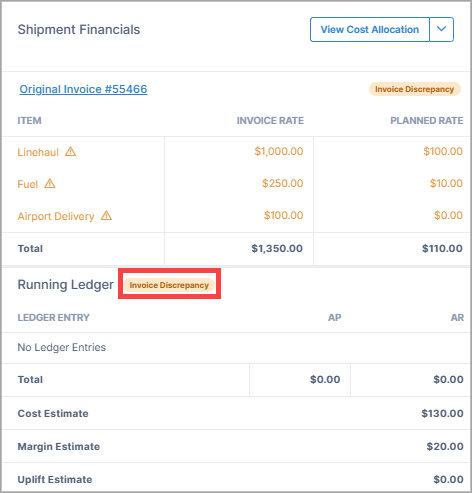
Important
After you complete Stage 7, the order/shipment statuses are as follows:

For a 3PL, a batch invoice is created and sent to their client.
For a direct shipper, a pay file is generated so they can pay the carrier.
Note
Note: No more changes to the billing information are possible after either the batch invoice or pay file is created.
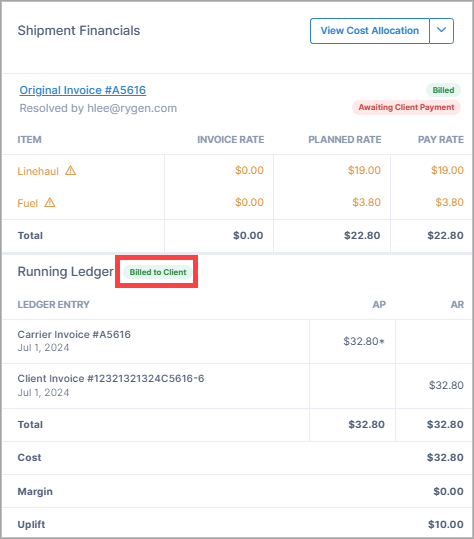
Important
After you complete Stage 8, the order/shipment statuses are as follows:

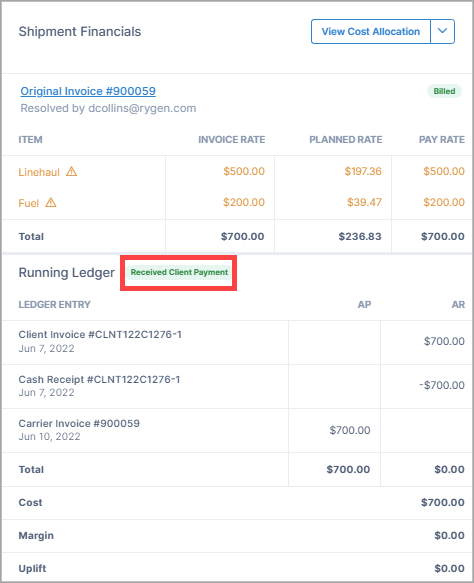
Important
After you complete Stage 9, the order/shipment statuses are as follows:

Note
Note: Stage 10 applies only if your accounting system has an integration with Corsair.
A 3PL applies a cash receipt to the client invoice after they receive payment from the client.
A direct shipper applies their payment directly to the carrier invoice.

Important
After you complete Stage 10, the order/shipment statuses are as follows:
